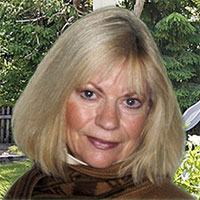The Touching Tale Of The Praying Hands
 In the fifteenth century, in a tiny village near Nuremberg, Germany, lived a family with 18 children. Yes, eighteen! To put food on the table for this mob, the father and head of the household, a goldsmith by trade, worked nearly 18 hours a day at his trade, as well as any other paying job he could find in the neighborhood.
In the fifteenth century, in a tiny village near Nuremberg, Germany, lived a family with 18 children. Yes, eighteen! To put food on the table for this mob, the father and head of the household, a goldsmith by trade, worked nearly 18 hours a day at his trade, as well as any other paying job he could find in the neighborhood.
Despite their seemingly hopeless situation, Albrecht and Albert, two of the older children, had a dream. They both wanted to pursue their talent for art, but they were well aware that their father would never be financially able to send either of them to an art academy.
After many long discussions at night in their crowded bed, the two boys finally worked out a pact. They would toss a coin. The loser would go down to the nearby mines and use his earnings to support his brother, who would attend the academy.
Then, after four years, when the brother who won the coin toss finished his studies, he in turn would support the mining brother to also attend the academy – either by selling his artwork or, if necessary, by working in the mines.
They tossed a coin one Sunday morning. Albrecht Dürer won the toss and went to Nuremberg to study art. Albert went down into the dangerous mines and spent the next four years financing his brother, whose creative work at the academy was almost immediately a sensation.
Albrecht’s etchings, woodcuts, and oils were far superior to those of most of his fellow students and even his professors, and by the time he graduated he was beginning to earn substantial fees for his commissioned works.
Prayer is communication with the Divine. It can be whispered or chanted or written or expressed in the work you do. However it is expressed, it is never in vain ~ Donna Wilk Cardillo
When the young artist returned to his village, the Dürer family held a festive dinner on their lawn to celebrate Albrecht’s triumphant homecoming. After a long and memorable meal, punctuated by music and laughter, Albrecht rose from his honored position at the head of the table to drink a toast to his beloved brother for the years of sacrifice that had enabled him to fulfill his ambition.
His final words were: “And now, Albert, blessed brother of mine, it is your turn. Now you can go to Nuremberg to pursue your dream, and I will take care of you.”
All heads turned in eager anticipation to the far end of the table where Albert sat. Tears streamed down his pale face and he shook his lowered head from side to side as he sobbed and repeated over and over: “No, no, no, no, no.”
Finally, Albert stood up and wiped the tears from his cheeks. He looked down the long table at the faces he loved, and then, holding his hands to his right cheek, he said softly, “No, brother. I cannot go to Nuremberg. It is too late for me. Look what four years in the mines have done to my hands! The bones in each finger have been smashed at least once, and lately the arthritis in my right hand is so bad that I cannot even hold a glass to return your toast, much less make delicate lines on parchment or canvas with a pen or brush. No, brother, it is too late for me.”
Over 450 years have passed. By now, Albrecht Dürer’s hundreds of masterful works – portraits, pen and silverpoint sketches, watercolors, charcoals, woodcuts, and copper engravings – hang in every major museum in the world. But chances are that, like most people, you are only familiar with one of Albrecht Dürer’s works. More than familiar, you may very well have a reproduction hanging in your home or office.
Nature holds the beautiful, for the artist who has the insight to extract it. Thus, beauty lies even in humble, perhaps ugly things, and the ideal, which bypasses or improves on nature, may not be truly beautiful in the end ~ Albrecht Dürer
Yes, you guessed it. One day, as a tribute to Albert for all he had sacrificed, Albrecht Dürer painstakingly drew his brother’s battered hands, palms together and slender fingers reaching skyward. He called his powerful drawing simply Hands, but the entire world almost immediately opened its hearts to his great masterpiece, later renaming his tribute to love The Praying Hands.
The next time you see a copy of this moving creation, take a second look. Let it remind you that no one really makes it alone in this world. We need the support, grace, and kindness of others. Where would many of us be without the selfless sacrifice and unconditional love of those around us?
I studied art history and the humanities at university for five years and graduated. Albrecht Dürer was one of my favorite artists I studied. However, I never heard this touching story until recently. I wish I knew the name of the author from whom I derived much of this information so that I could give him proper credit, but he is unknown. In any case, I hope that you gain as much as I have from the grace between these brothers.
|
|

Leave a Reply